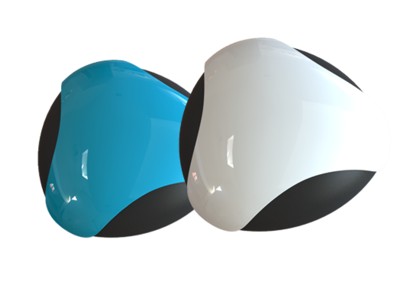Fixing iBeacon: Roam's Dropin system steels beacons for the enterprise

iBeacon is poised to deliver location-based services indoors in malls, campuses, public facilities such as stadiums and buildings of all kinds. But there is still a lot of work to do to make it usable.
From the small, cheap, third-party Bluetooth beacons to backend management systems, there is engineering and coding to be done.

When two developers from New Zealand-based app developer Roam Creative began looking at iBeacon, they found some real problems. Imported beacons would arrive brand new with flat batteries. The device had to be dismantled to change these batteries and the life expectancy of the new batteries was suspect.
Without some major changes, these things would be a nightmare for users to manage.
So they set about making those changes, designing a new beacon with a powerful battery and new firmware that would report into a back-end management console on battery life and allow remote firmware upgrades. Founders Ben Morreau and Chris Moore call the system Dropin.
Morreau and Moore developed it in their spare time while developing apps for major corporate clients such as Telefonica and Pfizer.
The duo sought help from a design team at Auckland university AUT who designed and prototyped Roam’s Droplet iBeacon using 3D printers. The first production run of 1000 of these is due soon.
Morreau and Moore returned separately to New Zealand from silicon Valley and the UK a couple of years ago having worked variously for Skype, the BBC and ASOS.com among other companies. They both founded their own app development companies but, after working together on the Telefonica app project, merged these to form Roam last September.
Apple’s announcement about iBeacon came soon after and piqued the pair’s interest. They imported some of the third party beacons that were available and found “they were not very good”.
“We thought we could do better,” Moore said.
Thanks to the work of AUT’s designers the Droplet has more of the iconic Apple look than other beacon providers have delivered, even though the long life battery means it is slightly larger than most others. The Droplet also goes into sleep mode if there are no phones around to detect.
But it wasn’t just battery issues they found. There have also been some security issues that allow phones to “spoof” beacons.
New firmware was written to address these issues and management requirements for users who could be expected to deploy dozens or even hundreds of units.
A lot of beacon manufacturers are focused on making the units small, Moore said, but businesses need them to be manageable. Constantly having to deal with battery changes will increase total cost of ownership.
He said the Droplet’s battery life is expected to be up to seven years and a smaller version can be made if there is demand.
New software was written of the phone apps as well and for the back-end cloud dashboard console, delivered via Amazon Web Services.
These allow automated rules-based offers to be delivered along with other kinds of targeted messaging and also for phone-based payment and loyalty. A software development kit has also been developed.
Trials are set to go ahead and overseas interest in the project is building quickly, Moore said. An overseas prospect is looking to deploy somewhere between 5,000 and 50,000 beacons.
The Droplet’s circuit boards are manufactured in Shenzhen, China, to Roam’s specifications while the casings and assembly is initially happening at Morrow Industries, in Drury, south of Auckland, New Zealand.
iBeacons have been slow to pick up traction,” Moore said. “There’s definitely a need, but retailers still have some hesitancy.”
As to the business model, Roam is happy to supply beacons and the SDK and services, but its main focus will be on larger enterprise deployments. The Beacons are tentatively priced at $US30 each.
Moore said up to 60 million beacons are predicted to be deployed, so the market opportunity is “very, very big”.
In the meantime, there is still a lot to be done. Roam is working on business intelligence drill-down features for the console, analytics and heat maps of activity.